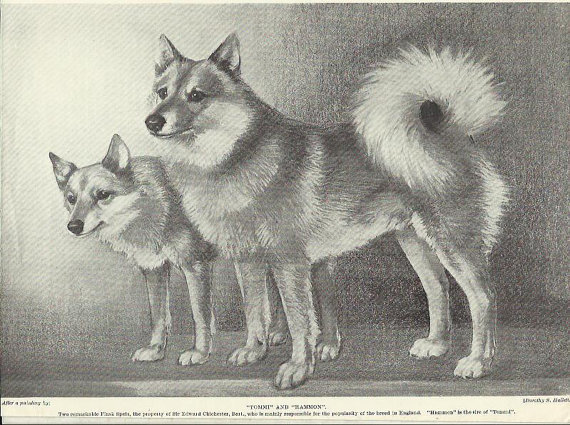
In the annals of purebred dog breeds, several breeds have been resurrected, or saved from extinction by hunters, and this includes the Finnish Spitz. A pair of sportsmen, Hugo Sandbery and Hugo Roos, saw their first Finnish Spitz on a hunting trip in the northern forests and were gobsmacked at the breed’s extraordinary abilities, particularly at hunting squirrel, Black Grouse, Capercaille, bear, wild boar and elk. This was 1880, and upon learning that the breed was nearly extinct, they determined to do what they could to save it. Sandberg wrote an article describing the dog, his conformation, temperament and exceptional hunting abilities, and implored (successfully) that the breed be saved. His efforts paid off when the breed was recognized by the Finnish Kennel Club in 1892, the standard based on Sandberg’s observations.
For his part, Hugo Roos took multiple trips to remote areas of northern Scandanavia to find what were probably the only remaining purebred Finnish Spitz for a breeding program. Most “Finkies” in the world today can trace their ancestry to the dogs bred between 1900 and 1910. Roos would breed Finnish Spitz for over thirty years before retiring to become a conformation show judge.
What both “Hugos” preserved is a gun dog used by hunting Finns for centuries. Combining the attributes of a setter, pointer and retriever, the Finnish Spitz is ultimately a “barking hunting dog” that brings the hunter to him (and the bird) with a voice said to carry over impressive distances. The barking serves also to distract the prey while masking the sound of the approaching hunter. So important is this quality in the breed that a Finnish Spitz may not qualify for the title of Champion in Sweden without a working or trials certificate.
In the course of doing a bit of homework for this post, we came across an article revealing another important role of a Finnish Spitz. Read it here.
Finnish Spitz dog print by Dorothy S Hallett 1935 is available here
